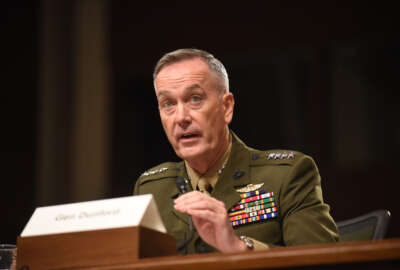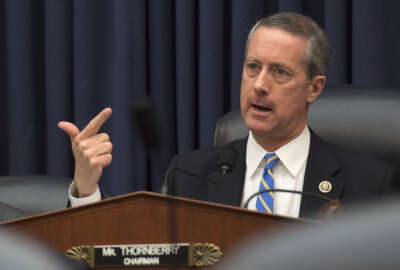
Opposition mounts against NDAA military pay raise, troop increase
A top Democrat said an active duty military pay raise of 2.1 percent could compromise much needed readiness.
A top Democrat on the House Armed Services Committee is concerned about some of the main personnel provisions in the 2017 defense authorization bill.
Rep. Susan Davis (D-Calif.), the ranking member on the military personnel subcommittee said Wednesday that a higher pay rate for active duty military members and an increase in active duty troops could affect readiness, budgeting and hurt the military further if sequestration returns.
Despite Davis’ apprehension, the subcommittee passed its portion of the Defense authorization bill by a unanimous vote. The recommendations in the markup will be folded into the whole bill and voted on by the full committee next week.
Davis’ unease over the two provisions stems from warnings about military readiness from the services.
The bill would raise active duty military pay by 2.1 percent, half a percent more than what was requested by President Barack Obama in his budget.
“I am concerned that by increasing [pay] above the requested amount we are taking funds away from other critical priorities including readiness,” Davis said during the April 20 Military Personnel subcommittee markup. “This additional half percent pay raise will provide an E-4 with an additional $11 a month, but that will cost a total of $330 million, which must be taken out of somewhere else in the budget.”
Davis said Marine Corps aviation mechanics are scrounging for parts because they don’t have funds to buy the parts needed to keep aircraft flying.
“That is readiness money, which keeps our troops supplied and ready to fight and this proposal would further raid those accounts in order to fund a pay increase of $11 a month,” Davis said. She added that a lack of readiness causes morale problems.
Of course, the 2.1 percent raise would not be so meager for other ranks in the military.
The subcommittee chose the 2.1 percent increase because it is tied to the Employment Cost Index, which measures the amount private sector wages will increase.
The law requires military raises stay on par with the ECI, but the actual amount military pay increases is decided by the President.
The full committee still needs to find a way to offset the extra money it will cost for the raise.
Military Personnel Subcommittee Chairman Joe Heck (R-Nev.) said after the hearing that the offset is more than the subcommittee could find in its budget, so it will have to go to the full committee for funding.
Heck said he was confident the committee could find the money for both the pay raise and the troop increase considering what the full committee is willing to authorize as its top line.
“Granted that there’s concerns [about] the out-years and we’ll have to address that in the out-years, but the Army has said the continued drawdown has put too much of a strain on forces and families,” Heck said.
The 27,000 increase in troops recommended in the bill comes with a hefty price tag. Justin Johnson, senior policy analyst at the Heritage Foundation, told Federal News Radio it could cost $1.5 billion to $2 billion just in 2017. That doesn’t include enduring costs.
Davis said adding troops when sequestration could return in 2018 could put the military in a tough spot.
“By requiring this number of soldiers without the money or support to pay for it, the subcommittee is offering an unfunded mandate that would result in a larger, but more hollow force,” Davis said.
Davis said the Army told Congress how many more troops it needs, if any, or how it would create the appropriate force structure for new troops.
Secretary of the Army nominee Eric Fanning did tell the Senate Armed Services Committee he thought the baseline 450,000 active duty Army troops by 2018 was too low for current threats.
Davis also noted that Congress does not know how the Army will handle a troop increase in the case of sequestration’s return.
“We could end up in a situation where Congress, having required the Army to increase its end strength, then ends up forcing the Army to drawdown by 30,000 soldiers in a single subsequent year,” Davis said.
Copyright © 2025 Federal News Network. All rights reserved. This website is not intended for users located within the European Economic Area.
Scott Maucione is a defense reporter for Federal News Network and reports on human capital, workforce and the Defense Department at-large.
Follow @smaucioneWFED





